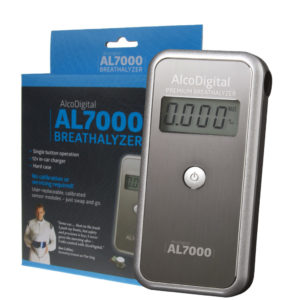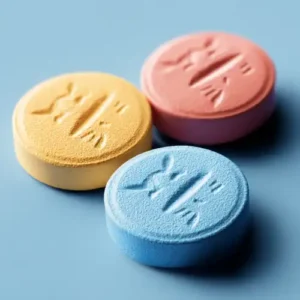Understanding Blood Alcohol Concentration
BAC refers to our blood alcohol concentration. This is the amount of alcohol that’s in your blood. If you have say .06% in your blood it means that you have 60 milligrams per 100 millilitres of blood. Each drink you have will raise the level of alcohol in your blood over time.
When you drink alcohol it moves through your entire bloodstream. The liver breaks down about 90% of the alcohol and the remainder passes out of your body without any change taking place. For one drink this process takes about two hours. If you keep having drinks the alcohol will stay in the liver until it’s processed. The BAC will rise at a rapid rate the more that you drink. Once you stop drinking the BAC will drop but it takes longer to drop than it does to rise.
The weight, sex, height, race and other factors doesn’t factor into how alcohol is metabolised by the body as it’s about the same for everybody. Every hour the alcohol is metabolised at about 0.15. After about 10 hours the person with a BAC of .15 won’t have any alcohol in the bloodstream that can be measured. The mathematical equation for this is .15 divided by .015 = 10.
Examples:
Under the UK Legal Drink Driving Limit you had a BAC of 0.08 it would take 5.33 hours for all the alcohol to leave your body. With a BAC of 0.08 therefore:
- 1 hour the BAC would be 0.065
- 2 hours the BAC would be 0.05
- 3 hours the BAC would be 0.035
- 4 hours the BAC would be 0.02
- 5 hours the BAC would be 0.005
After about 5 hours and 20 minutes the alcohol would be eliminated from your body. Every twenty minutes you metabolise about 0.005 alcohol so the equation is 0.005 x 3 = 0.015
You can tell when your body is going to be free of alcohol but you still need an alcohol tester such as a disposable alcohol test or a breathalyser to know your exact BAC.
For a man weighing 10 stone, it’s not difficult to get a BAC of 0.08 as you would need 3 drinks per hour. If you’re binge drinking then the alcohol will stay in the body for over 10 hours.
While the examples above illustrate how alcohol is eliminated from the body over time based on BAC levels, it’s important to understand that the rate of elimination can vary for each individual. Several factors influence how quickly your body metabolizes alcohol, including:
Age – As we get older, our body’s ability to break down alcohol becomes less efficient. An older person may take longer to reach peak BAC levels compared to a younger person who consumed the same amount of alcohol.
Body Weight – People with more body mass generally have more water in their bodies to dilute alcohol. So a heavier person may show lower BAC levels than a lighter person who drank the same amount.
Biological Sex – Studies show that women tend to have higher BAC levels than men of the same weight after drinking the same amount of alcohol. This is partly due to differences in body water composition.
Food Intake – Having food in your stomach before drinking can slow the absorption of alcohol into your bloodstream. So someone who has eaten may show a lower peak BAC compared to someone drinking on an empty stomach.
Medications – Some medications can accelerate or slow alcohol metabolism. For example, some diabetic medications can cause alcohol to be absorbed more slowly.
There are three main ways of testing for alcohol. All of these methods can give an approximation of the amount of alcohol in the bloodstream. If you are self-testing and are concerned that you may be over the limit to drive, one of these alcohol test kits should help you establish your BAC.
Urine Test Kit for Alcohol
Using a urine test for alcohol is a reliable and easy to do. Urine alcohol tests are fairly cheap and produce an indication of BAC in minutes.
Saliva Test Kit for Alcohol
Using a Rapid Saliva Test for Alcohol also produces reliable results and is a less intrusive method of testing if you are screening a young person or employee. Alcohol Saliva Tests are also fairly cheap to buy and produce reliable results in minutes.
Breath Test Kit for Alcohol
Calculating BAC from breathe can be done by using a breathalyser of disposable Alcohol Breath Test Kit. The latter tests are a relatively cheap way of testing for alcohol and this type of alcohol screening can be carried out anywhere. A Breath Alcohol Tester often comes in two versions – one detects alcohol at 0.08%, the other detects BAC at 0.02%.
How Alcohol Impacts Your Driving
When you drink, this impacts your ability to drive in a safe manner. As you drink more this only gets worse. Your gender, weight and the amount that you drink, the amount of food you eat, as well as you fast you drink are factors as to how well you’ll operate a vehicle when you’re drinking. Your best bet is to not drink and drive at all no matter how much you have had to drink.
It’s crucial to remember that even with BAC levels below the legal limit of 0.08%, alcohol can still significantly impair your driving abilities. In fact, driving skills begin to deteriorate with the first drink. By 0.05% BAC, you may already experience reduced coordination, difficulty steering, and slower response times – all increasing your crash risk.
The wisest choice is to avoid driving if you’ve been drinking. Just a little bit of alcohol can reduce your judgment and make you think you are “OK to drive” when you are not. If you plan to have a drink, make transportation arrangements beforehand to avoid putting yourself and others in danger on the roads.
At 0.02 BAC
Some Effects
- You have some loss of judgement
- You are relaxed
- You have a warmer body
- You have an altered mood
Impact on Driving:
- You have impaired functions of your vision such as the ability to track objects quickly
- Your ability to do two tasks at the same time is impaired
At 0.05 BAC
Some Effects
- Your behaviour is exaggerated
- You may have some loss of your muscle control such as eye focus
- Your judgement is impaired
- You will feel good
- Your alertness is lowered
- You have less inhibition
Impact on Driving:
- You have less coordination
- You have less ability to track objects
- You have difficulty with steering
- You have less response to emergency situations
At 0.08 BAC
Some Effects
- The muscle coordination is poor. Such as speech, balance, reaction time, hearing, and vision
- Harder to detect danger
- Your self-control, reasoning, memory and judgement are impaired
Impact on Driving:
- You have less concentration
- You have short-term memory loss
- Less speed control
- You process information at a slower rate such as signal detection
- You have impaired perception
At 0.10 BAC
Some Effects
- Less reaction time or control
- You have poor concentration, slowed thinking and slurred speech.
Impact on Driving:
- You have problems braking and staying in the same lane
At 0.15 BAC
Some Effects
- You have far less muscle control
- You may get sick and vomit unless you have a high tolerance for alcohol due to abuse
- You will have a loss of balance
Impact on Driving:
- You will have a great deal of difficulty driving a car. Your visual, auditory and other senses will be greatly reduced. You won’t be able to concentrate on the road.
In summary, how long alcohol remains in your system depends on several variables like age, weight, sex, food intake, and health conditions. But in general, it takes around one hour to metabolise each drink consumed. The only way to become completely sober is to allow time for your body to fully eliminate the alcohol.
Photo: “Alcohol” by Anthony Cunningham for Zoom Testing
Zoom Testing is a leading UK drug testing company and a supplier of Drug Test Kits.






